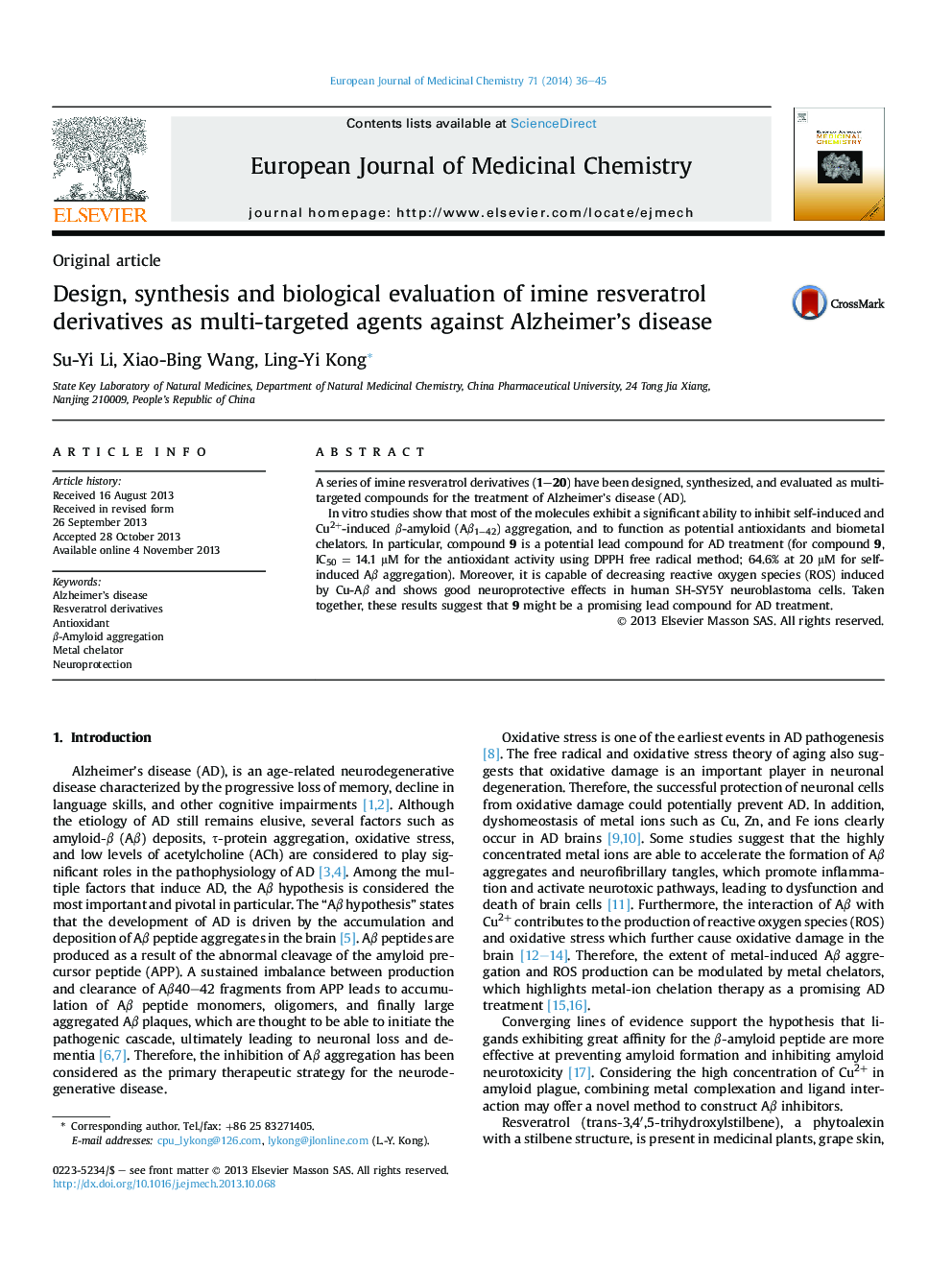| Article ID | Journal | Published Year | Pages | File Type |
|---|---|---|---|---|
| 1392579 | European Journal of Medicinal Chemistry | 2014 | 10 Pages |
•A series of imine resveratrol derivatives (1–20) were designed and synthesized.•Most of the compounds could function as antioxidants and inhibit Aβ aggregation.•Most of the compounds showed neuroprotection and metal chelating ability.•9 was found to be a promising lead compound for further study.
A series of imine resveratrol derivatives (1–20) have been designed, synthesized, and evaluated as multi-targeted compounds for the treatment of Alzheimer's disease (AD).In vitro studies show that most of the molecules exhibit a significant ability to inhibit self-induced and Cu2+-induced β-amyloid (Aβ1–42) aggregation, and to function as potential antioxidants and biometal chelators. In particular, compound 9 is a potential lead compound for AD treatment (for compound 9, IC50 = 14.1 μM for the antioxidant activity using DPPH free radical method; 64.6% at 20 μM for self-induced Aβ aggregation). Moreover, it is capable of decreasing reactive oxygen species (ROS) induced by Cu-Aβ and shows good neuroprotective effects in human SH-SY5Y neuroblastoma cells. Taken together, these results suggest that 9 might be a promising lead compound for AD treatment.
Graphical abstractA series of imine resveratrol derivatives were designed, synthesized, and evaluated as multi-targeted compounds for the treatment of AD. 9 might be a promising compound for further study.Figure optionsDownload full-size imageDownload as PowerPoint slide
